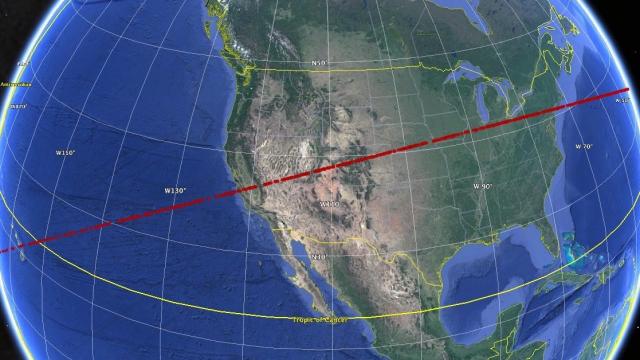NASA, FEMA and other national and international agencies are once again gearing up for a hypothetical asteroid impact preparedness scenario. They hope to learn the best strategies for responding to a potential strike, starting from the moment a threatening asteroid is first detected by astronomers.
Next week marks the start of the International Academy of Astronautics Planetary Defence Conference. As part of this conference, NASA’s Planetary Defence Coordination Office will team up with other partners to perform a “tabletop exercise” on how they’d handle the news of a (fictional) asteroid on a collision course with Earth.
Again, the following is fictional.
On 26 March 2019, astronomers discover an asteroid in the night sky, far dimmer than Pluto to their telescopes. They name it 2019 PDC. Initially, it appears that the asteroid’s eccentric orbit bring it within approximately 18 times the Moon’s distance from the Earth, with a chance of hitting the Earth at one in 50,000 in 2027.
Astronomers continue to track the object as it gets closer. They learn it could be somewhere between 100 and 300m wide — the size of a skyscraper. After a month of tracking, the probability of collision with Earth is now one per cent — the threshold at which international organisations have agreed they must take action.
Astronomers are able to create a “risk corridor”, measuring where the asteroid might hit. Its potential paths intersect the United States, some of western Africa, and the Atlantic and the Pacific Ocean.
Though just a drill, these are the kinds of calculations that astronomers must make when a real asteroid comes close to Earth. The fictional 2019 PDC describes a “potentially hazardous asteroid”, the kind that orbits close to Earth and that could have a catastrophic impact if it actually struck the planet.
Scientists recently performed a similar simulation to this one, monitoring a nearby asteroid as though it were an actual threat. The new simulation instead will focus less on the scientific questions, and more on governmental response.
This simulation is the sixth near-Earth-object impact exercise that NASA has taken part in. Not only do these exercises help NASA officials think through what they’d do in the event of a threat, but they also help them know what information is most important to FEMA and other agencies.
“What emergency managers want to know is when, where and how an asteroid would impact, and the type and extent of damage that could occur,” Leviticus Lewis of the Response Operations Division for FEMA said in the NASA press release.
We’ll be keeping track of news from the conference next week and reporting on any interesting developments. You can also follow along via a Twitter account run by the European Space Agency, @esaoperations, which will be sharing real-time updates from the exercise.
